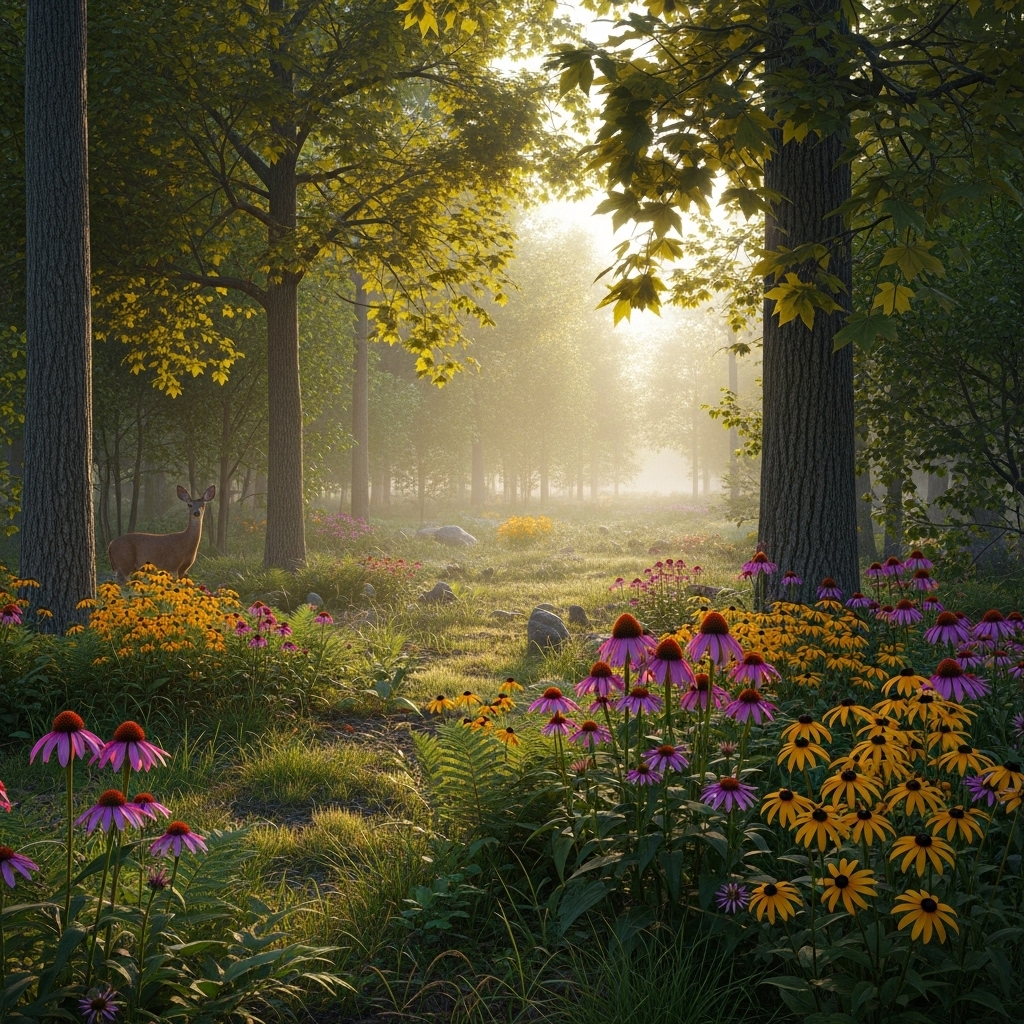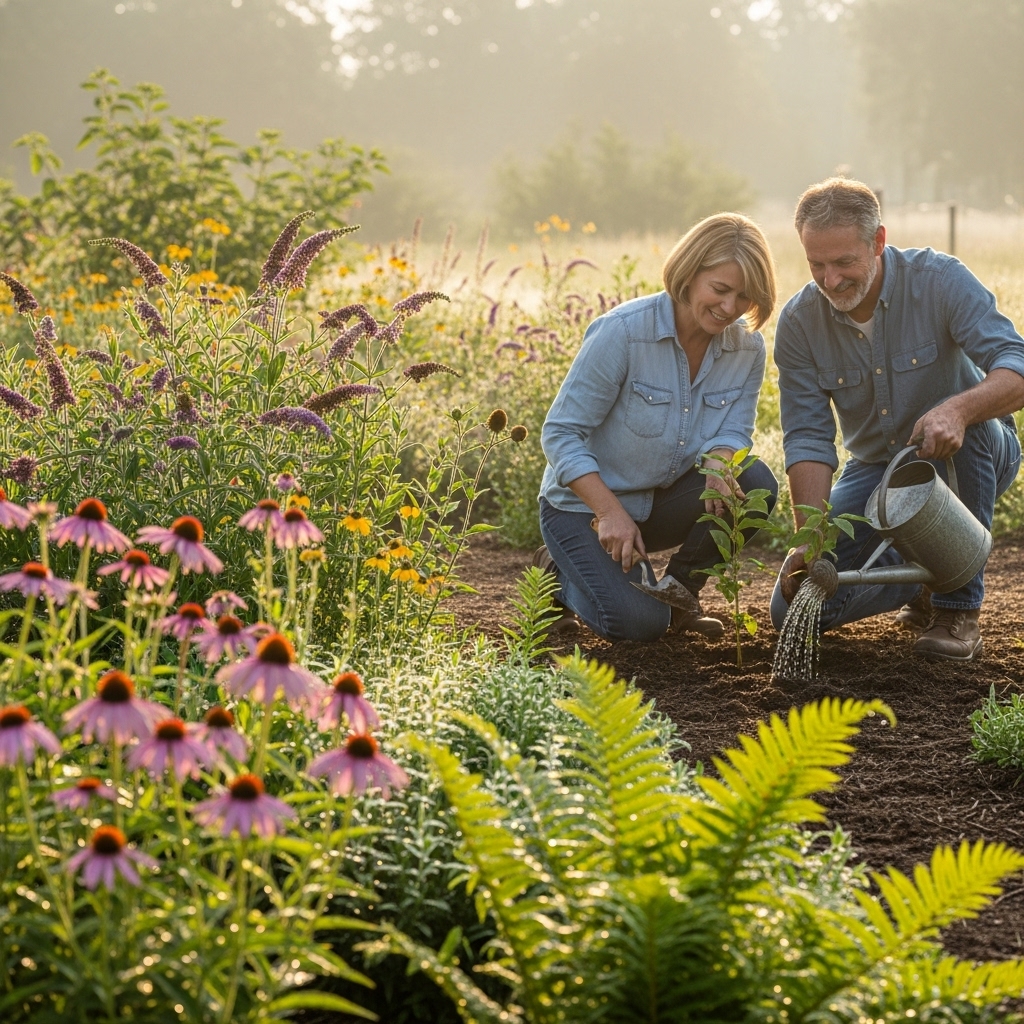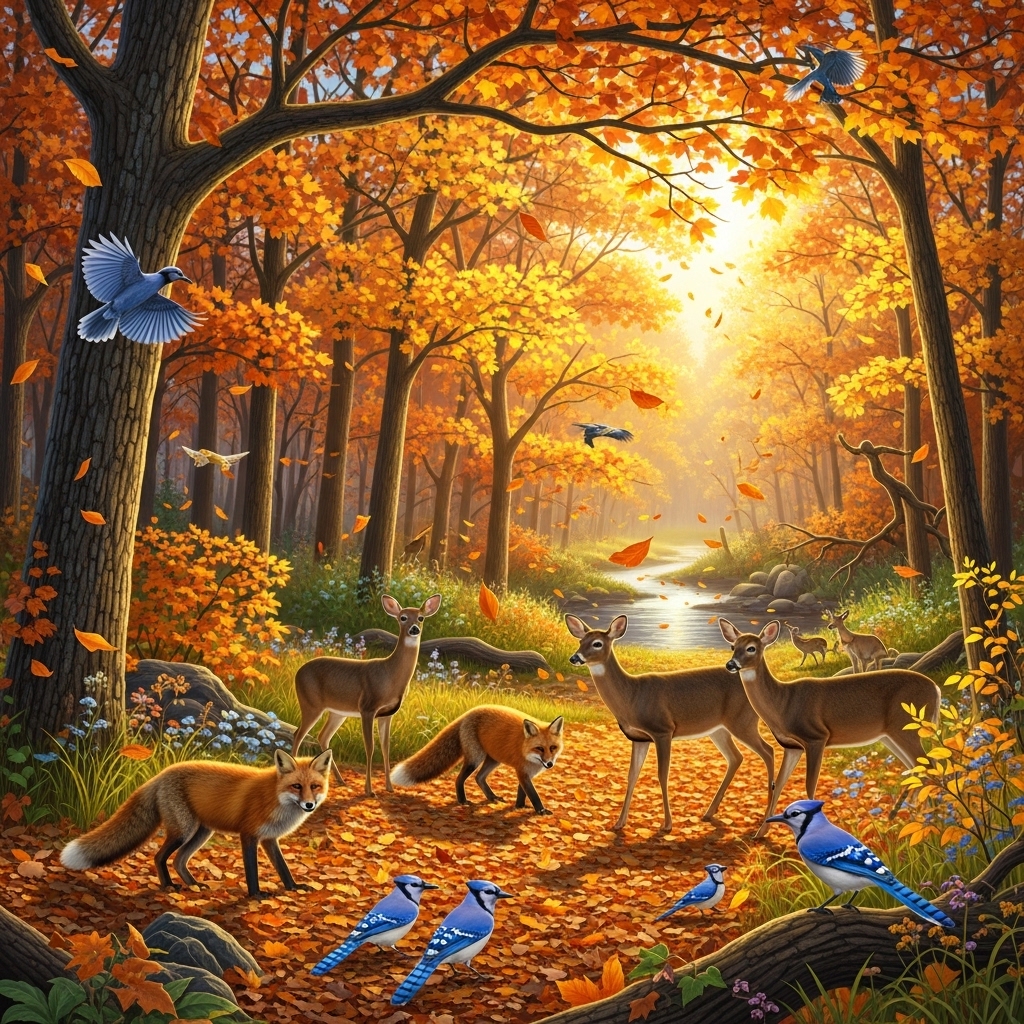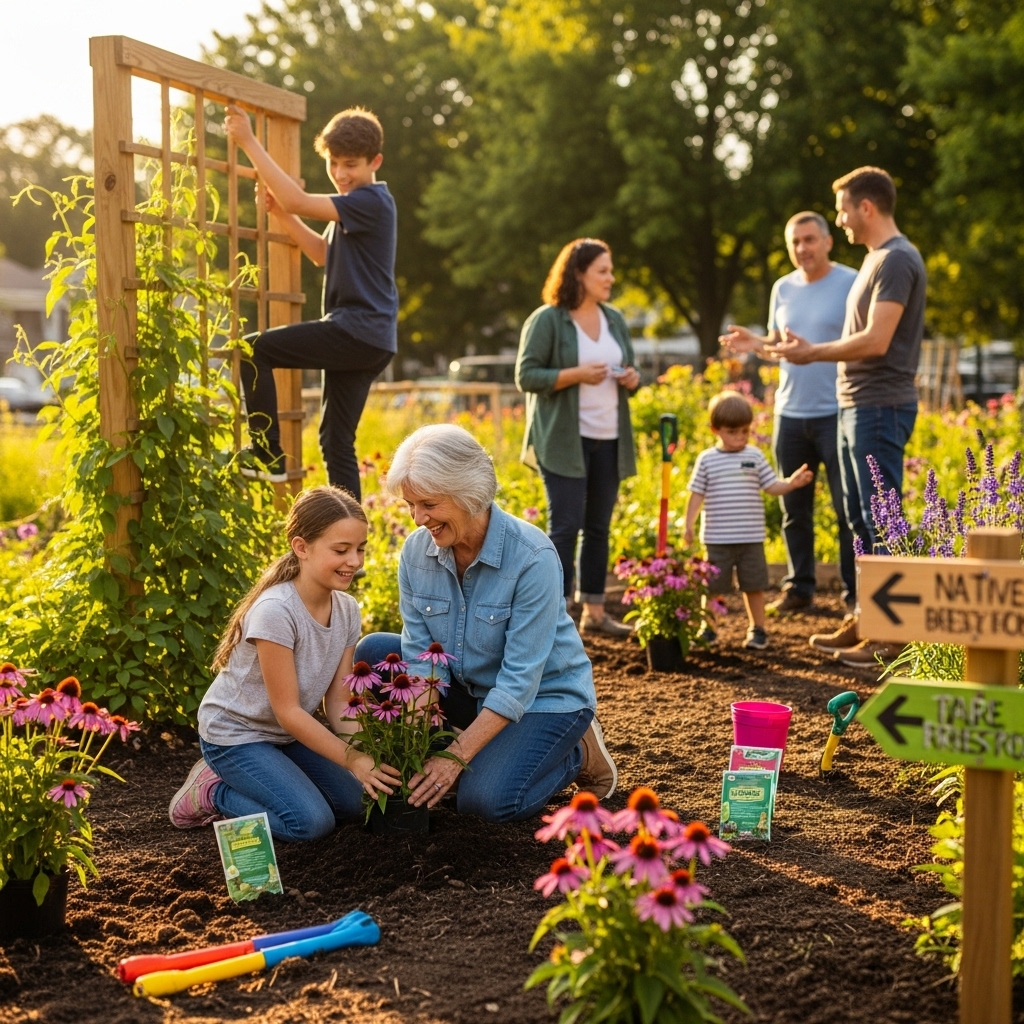As I delve into the beauty of Michigan’s native flora, I’m reminded of the intricate relationship between plants and our environment. Understanding these plants not only enriches our gardens but also supports local ecosystems.
Understanding Michigan’s Native Flora

When I first started exploring the world of native plants in Michigan, I was astonished by the diversity and beauty that flourished in my own backyard. Native flora is essential for maintaining the balance of our ecosystems, and it plays a crucial role in supporting wildlife, including birds, bees, and butterflies. As I embarked on this journey, I discovered that planting native species not only benefits the environment but also creates a sustainable garden that thrives with minimal maintenance.
Michigan is home to over 2,000 native plant species, each adapted to the local climate, soil conditions, and wildlife. These plants have evolved over centuries, developing unique characteristics that allow them to thrive in the Great Lakes region. By choosing to plant native species, I’ve seen firsthand how they can transform any garden into a vibrant and sustainable ecosystem.
The Benefits of Planting Native Species
One of the first lessons I learned is that native plants are remarkably resilient. They are adapted to local soil and climate conditions, which means they require less water, fertilizer, and pesticides compared to non-native varieties. This resilience not only saves me time and money but also reduces my garden’s environmental impact. As I’ve witnessed my native garden flourish, I’ve been amazed at how little intervention is necessary once these plants are established.
In addition to their hardiness, native plants support local wildlife. When I planted a variety of native species, I noticed an increase in the number of pollinators visiting my garden. Bees, butterflies, and hummingbirds are drawn to the nectar and pollen of these plants, aiding in their reproduction while providing sustenance to the creatures that rely on them. For example, I’ve found that the butterfly weed (Asclepias tuberosa) not only attracts beautiful monarchs but also contributes to the overall health of the ecosystem in my area.
Creating a Biodiverse Habitat
As I began to understand the importance of biodiversity, I realized that planting a variety of native species creates a more resilient ecosystem. In my own garden, I’ve incorporated a mix of grasses, wildflowers, and shrubs to provide multiple layers of habitat. This diversity ensures that there’s food and shelter for various species throughout the seasons.
For instance, I’ve planted native grasses like little bluestem (Schizachyrium scoparium) and big bluestem (Andropogon gerardii) to provide structure and habitat for wildlife. These grasses not only offer shelter but also help prevent soil erosion, contributing to the stabilization of the landscape. Adding wildflowers such as coneflower (Echinacea purpurea) and black-eyed Susan (Rudbeckia hirta) has brought vibrant color to my garden while attracting pollinators. I’ve learned that each plant plays an essential role in creating a balanced ecosystem.
Choosing the Right Native Plants
When selecting native plants for my garden, I found it helpful to consider the specific conditions of my site. Factors such as soil type, moisture levels, and sunlight exposure all influence which plants will thrive. I began by assessing my garden space, noting areas that receive full sun versus those that are shaded. This assessment guided my plant choices and allowed me to create a more harmonious garden.
For sunny areas, I’ve had great success with plants like prairie phlox (Phlox pilosa) and blazing star (Liatris spicata), both of which are not only beautiful but also attract a wide range of pollinators. In shadier spots, I’ve turned to native ferns such as ostrich fern (Matteuccia struthiopteris) and wild ginger (Asarum canadense), which thrive in low-light conditions and add a lush, green texture to my garden.
Designing Your Native Plant Garden
As I began planning my native garden, I discovered that design plays a significant role in its success. I chose to create distinct zones within my garden, each with its own theme and plant palette. This approach not only enhances visual interest but also mimics the natural landscapes found throughout Michigan.
I created a rain garden in a low-lying area of my yard, featuring plants like cardinal flower (Lobelia cardinalis) and swamp milkweed (Asclepias incarnata). This garden not only captures rainwater runoff but also provides a habitat for numerous amphibians and insects. Meanwhile, I’ve dedicated sunny patches to a prairie-inspired garden, where I’ve planted a mix of wildflowers and grasses, allowing for a vibrant display throughout the growing season.
Another design element I’ve incorporated is layering. By placing taller plants in the back and shorter ones in the front, I’ve created a visually appealing arrangement that allows each plant to shine. This strategy has also created a sense of depth and dimension in my garden, making it a delightful space to explore.
As I share my journey of planting Michigan’s native flora, I hope to inspire others to embrace the beauty and benefits of these local plants. Each species tells a story of resilience and adaptation, contributing to the greater tapestry of our environment. I am excited to continue discovering new native plants and their roles in supporting our ecosystems, and I encourage you to join me on this rewarding adventure.
Maintaining a Native Plant Garden

As my native garden began to flourish, I quickly realized that maintenance is key to keeping it healthy and vibrant. However, the beauty of native plants is that they typically require much less care than non-native species once they are established. I took some time to learn about the best practices for maintaining my garden, ensuring that I could enjoy its beauty without it becoming a burden.
One of the first things I discovered is the importance of understanding the growth habits of native plants. Some species can spread aggressively, while others might stay relatively contained. For example, I found that the common milkweed (Asclepias Syriaca) can spread quickly, which is great for attracting pollinators but can also crowd out other plants if left unchecked. I’ve learned to keep an eye on these species, regularly monitoring their growth and occasionally thinning them out when necessary, which promotes overall health and biodiversity in my garden.
Watering became another essential aspect of my maintenance routine. Initially, I was concerned about keeping my newly planted natives hydrated, especially during dry spells. I soon learned that once established, many native plants are quite drought-resistant. I made it a point to water them deeply but infrequently, encouraging their roots to dig deeper into the soil. This practice not only conserves water but also strengthens the plants over time. However, I have kept a close watch during the first growing season, making sure they receive adequate moisture until they are well established.
Mulching has also played an important role in the health of my garden. Applying a layer of organic mulch around my plants helps retain moisture, suppress weeds, and maintain soil temperature. I’ve used shredded leaves and wood chips, both of which are readily available in my area. This not only aids in the health of my plants but also contributes to the overall aesthetic of the garden, creating a tidy and finished look.
Speaking of weeds, I’ve learned that managing them is crucial for the success of my native garden. While native plants are resilient, weeds can outcompete them for resources. Regularly pulling weeds by hand has become part of my gardening routine, and I’ve found that focusing on weeding early in the season, before they have a chance to go to seed, makes a significant difference in the long run. This practice has helped keep my garden looking neat and thriving, allowing my native plants to shine.
Seasonal Changes and Wildlife

One of the most rewarding aspects of maintaining a native plant garden is witnessing the seasonal changes and the wildlife that it attracts throughout the year. As I’ve observed, each season brings its own unique beauty and variety of activity in my garden.
In spring, my garden bursts into life with vibrant blooms that signal the return of pollinators. I’ve enjoyed watching bees buzz around the early flowers like hepatica (Hepatica americana) and trillium (Trillium grandiflorum). It’s heartening to see how quickly these creatures respond to the flowers, and I’ve made it a point to keep a journal to record the different species I encounter. This way, I can deepen my understanding of which plants are particularly attractive to certain pollinators.
Summer is undoubtedly the peak season for activity in my garden. The rich tapestry of colors from blooming wildflowers attracts not just pollinators but also other wildlife such as birds and small mammals. I’ve noticed that my backyard has become a haven for goldfinches, which are particularly fond of the coneflower seeds. Watching them flit about from plant to plant has been a joyful experience, and I’ve embraced the opportunity to learn about their behaviors and nesting habits.
As the seasons change into fall, I’ve come to appreciate the beauty of seed heads and the dormant state of my plants. This is a time when many native species, such as asters and goldenrods, begin to fade but still provide essential resources for wildlife. I’ve left many of the seed heads intact throughout the winter, as they not only add visual interest but also serve as food for birds during the colder months.
Winter presents a peaceful stillness, and I’ve taken the time to reflect on the cyclical nature of my garden. While many plants lie dormant, the structure of my native garden remains intact, providing shelter for insects and other wildlife. I’ve found great comfort in observing how, even in the depths of winter, life continues in my garden, reminding me of the resilience that native species embody.
Engaging the Community

As my passion for native plants grew, I felt a desire to share my journey with others in my community. I decided to connect with local gardening groups and environmental organizations, eager to learn from others and inspire them to embrace the beauty and importance of native flora.
Participating in community workshops and events has been incredibly fulfilling. I’ve met fellow gardeners who share insights and experiences that have enriched my understanding of native plants. Together, we’ve exchanged tips on plant selection, maintenance, and the various benefits of gardening sustainably. I’ve also volunteered to help organize native plant sales, where I can promote the importance of local flora while helping others discover the joy of gardening with native species.
One of my proudest moments was hosting a native plant garden tour in my neighborhood. I opened my garden to visitors, showcasing the beauty and diversity of the native plants I had cultivated. It was gratifying to see others inspired by my garden, asking questions and expressing interest in creating their own native landscapes. That day, connections were made, and I felt a sense of unity among those who share a passion for preserving and appreciating the natural world.
Through these experiences, I’ve learned that engaging with my community is just as important as cultivating my garden. Together, we can advocate for the preservation of our native ecosystems and inspire future generations to appreciate the incredible variety of plants that Michigan has to offer.
